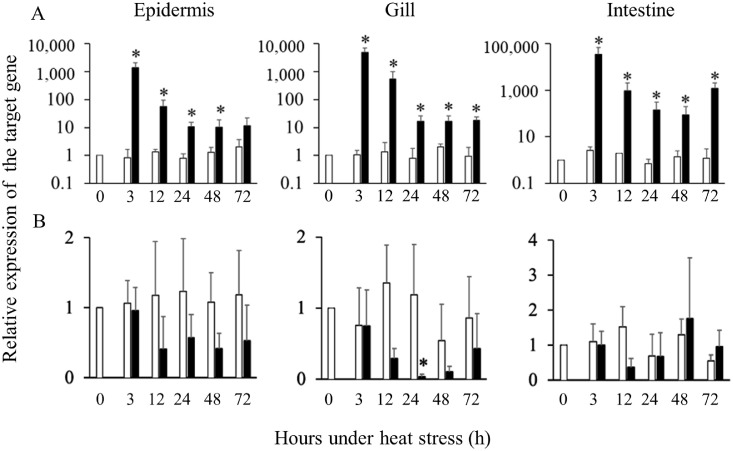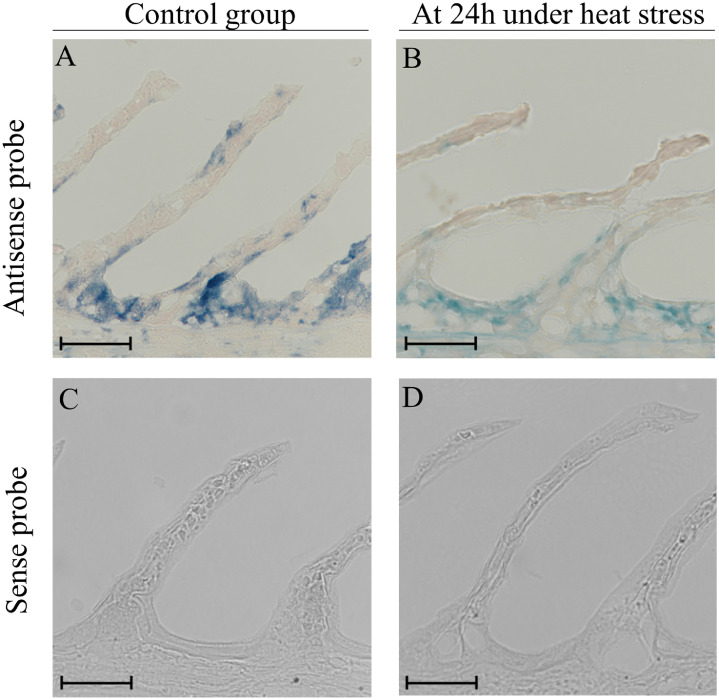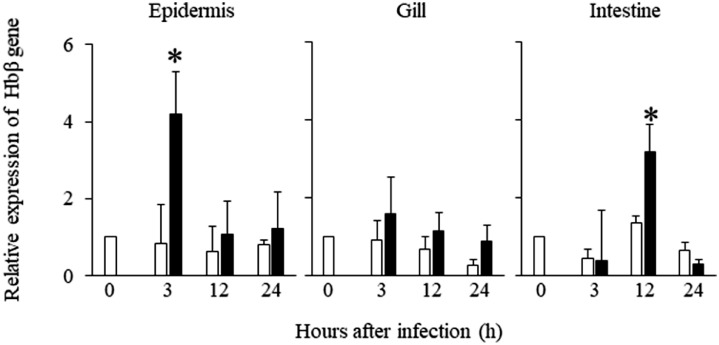Alteration of hemoglobin ß gene expression in mucosal tissues of Japanese flounder, Paralichthys olivaceus, in response to heat stress, Edwardsiella piscicida infection, and immunostimulants administration
Abstract
Hemoglobin beta (Hbß) is a heme-binding protein capable of oxygen delivery. The oligopeptides derived from Hbβ in fish mucus are active against a variety of gram-negative bacteria and protozoa. To gain information on the physiological and immunological roles of Hbβ in the mucosal tissues of fish, we analyzed changes in Hbß gene expression levels in the epidermis, gills, and intestine of Japanese flounder, Paralichthys olivaceus, in response to heat stress, Edwardsiella piscicida infection, and trial feeding of immunostimulants, high-concentration ascorbic acid (AsA) or lactoferrin (LF). The results of quantitative real-time PCR showed that expression of the Hbß gene in the gills decreased markedly when exposed to heat stress, whereas that in the epidermis exhibited an increase 3h after infection with E. piscicida. Seven days after starting to feed either immunostimulant, epidermal Hbß gene expression in all AsA or LF dose groups was significantly higher than in the control group. The results of in situ hybridization showed that the abundance and intensity of the stained cells in the epidermis and in the gills were consistent with the expression levels of Hbß gene obtained from the infection and immunosuppressant experiments and the heat stress experiment, respectively. Our results suggest that mucosal Hbβ gene expression is closely related to physiological and immunological status and could be a useful indicator for monitoring condition of fish health.




 求助内容:
求助内容: 应助结果提醒方式:
应助结果提醒方式:


